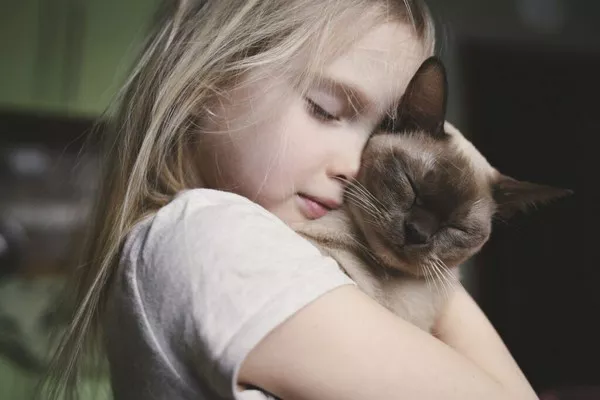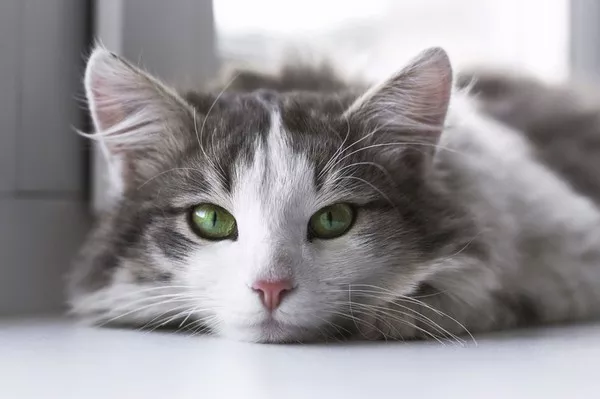Calico cats, with their distinctive tri-color coats, are a favorite among cat enthusiasts. These beautiful felines require special care to maintain their unique fur, and one common issue that arises is the development of knots or mats in their fur. This article will delve into the causes of these knots, effective methods to remove them, and preventive measures to keep your Calico cat‘s coat in pristine condition. With insights from my extensive experience in breeding and caring for Calico cats, this guide will provide you with the knowledge and tools necessary to manage your cat’s grooming needs efficiently.
What Causes Knots in Calico Cats’ Fur?
Knots, also known as mats, occur when fur becomes tangled and forms clumps. Several factors contribute to this problem:
Fur Length and Type: Calico cats can have short, medium, or long hair. Long-haired Calicos are more prone to knots due to the length and density of their fur.
Seasonal Shedding: During shedding seasons, loose hairs can get trapped in the coat, leading to tangles.
Lack of Grooming: Inadequate grooming or infrequent brushing can cause the fur to mat.
Activity Level: Active cats that explore outdoors or play vigorously are more likely to develop knots due to their fur catching on debris or dirt.
Health Issues: Certain health problems, such as obesity or arthritis, can prevent cats from grooming themselves effectively, leading to mats.
How Can You Identify Knots in Calico Cats Early?
Early detection of knots is crucial in preventing severe matting. Regularly inspecting your cat’s coat can help catch tangles before they become problematic. Key signs to look for include:
Visible Clumps: Small, tangled clumps of fur that are visible on the surface.
Discomfort or Irritation: Cats may show discomfort when touched in areas with mats or may excessively groom a particular spot.
Changes in Behavior: A normally active cat may become lethargic or irritable if mats are causing discomfort.
Skin Irritation: Redness or inflammation under the fur can indicate the presence of knots.
Effective Methods to Remove Knots in Calico Cats
What Tools Do You Need for Knot Removal?
Having the right tools is essential for effective and gentle knot removal. Some of the necessary tools include:
Wide-toothed Comb: Helps in detangling without causing too much pain or pulling on the fur.
Mat Splitter: A specialized tool designed to cut through mats without damaging the skin.
Slicker Brush: Ideal for removing loose fur and smoothing out the coat after detangling.
Scissors: Used cautiously, scissors can cut through particularly stubborn mats.
Detangling Spray: Helps to loosen knots and make the fur easier to comb through.
How to Safely Remove Knots from Your Calico Cat?
Preparation: Ensure your cat is calm and comfortable. You may want to groom them in a quiet, familiar space to reduce stress.
Use a Wide-toothed Comb: Start by gently combing through the fur with a wide-toothed comb to remove loose hairs and locate the knots.
Apply Detangling Spray: Spray the detangling solution on the matted area and let it sit for a few minutes to soften the fur.
Work on the Knots: Use the mat splitter to carefully cut through the knots. Hold the fur close to the skin to avoid pulling and causing pain.
Comb Out the Knots: After breaking up the mats, use the wide-toothed comb to gently detangle the fur. Follow up with a slicker brush to smooth out the coat.
Trim if Necessary: For extremely stubborn knots, use scissors to carefully cut them out, ensuring you do not nick the skin.
What Should You Avoid When Removing Knots in Calico Cats?
Do Not Pull: Pulling on the fur can cause pain and stress for your cat. Always hold the fur close to the skin when working on knots.
Avoid Using Human Grooming Tools: Human brushes and combs are not designed for cats and can be ineffective or harmful.
Do Not Use Excessive Force: Be gentle and patient. Forcing the comb through a knot can hurt your cat and damage their fur.
Preventive Measures to Keep Your Calico Cat’s Fur Knot-Free
How Often Should You Groom Your Calico Cat?
Regular grooming is key to preventing knots. The frequency of grooming depends on your cat’s coat type:
Short-haired Calico Cats: Once a week should suffice.
Medium-haired Calico Cats: Two to three times a week is recommended.
Long-haired Calico Cats: Daily grooming is ideal to prevent tangles and mats.
What Are the Best Grooming Practices?
Establish a Routine: Create a consistent grooming schedule that your cat can become accustomed to.
Use Appropriate Tools: Invest in high-quality grooming tools designed for cats.
Be Gentle and Patient: Make grooming a positive experience with gentle strokes and treats to reward your cat.
Check for Debris: Regularly inspect your cat’s coat for debris that can cause knots.
How to Manage Shedding Seasons?
During shedding seasons, cats lose more fur, which can lead to increased tangling. To manage shedding:
See Also: How Long Can You Leave a Calico Cat Alone?
Increase Grooming Frequency: Brush your cat more frequently to remove loose fur.
Use Deshedding Tools: Tools like the FURminator can effectively remove loose undercoat hair.
Maintain a Healthy Diet: A balanced diet rich in omega-3 and omega-6 fatty acids promotes healthy skin and coat, reducing excessive shedding.
Special Considerations for Senior Calico Cats
How Does Aging Affect Grooming Needs?
Senior cats may have different grooming needs due to various factors:
Reduced Mobility: Arthritis or other age-related conditions can make self-grooming difficult.
Skin Sensitivity: Older cats may have more sensitive skin, requiring gentler grooming techniques.
Increased Shedding: Some senior cats may shed more due to changes in their metabolism or health.
What Are the Best Practices for Grooming Senior Calico Cats?
Gentle Handling: Be extra gentle when grooming older cats to avoid causing discomfort.
Regular Health Check-ups: Ensure your cat’s health issues are managed to facilitate easier grooming.
Adapt Grooming Tools: Use softer brushes and consider heated grooming pads to soothe aching joints during grooming sessions.
How to Recognize and Address Health Issues Related to Grooming?
Regular grooming sessions are an excellent opportunity to check for health issues such as:
Skin Conditions: Look for redness, bumps, or sores that could indicate allergies or infections.
Weight Loss or Gain: Changes in weight can affect your cat’s ability to groom itself.
Behavioral Changes: Reluctance to be groomed or sudden aggression may indicate pain or discomfort.
Conclusion
Grooming your Calico cat is not just about keeping them looking their best; it’s also crucial for their overall health and well-being. By understanding the causes of knots, using the right tools and techniques, and establishing a regular grooming routine, you can ensure your Calico cat remains happy, healthy, and comfortable. Remember, patience and gentleness are key, especially with senior cats. Regular grooming sessions also provide valuable opportunities to monitor your cat’s health and bond with them, making it a rewarding experience for both you and your feline friend.
Related Topics:


























